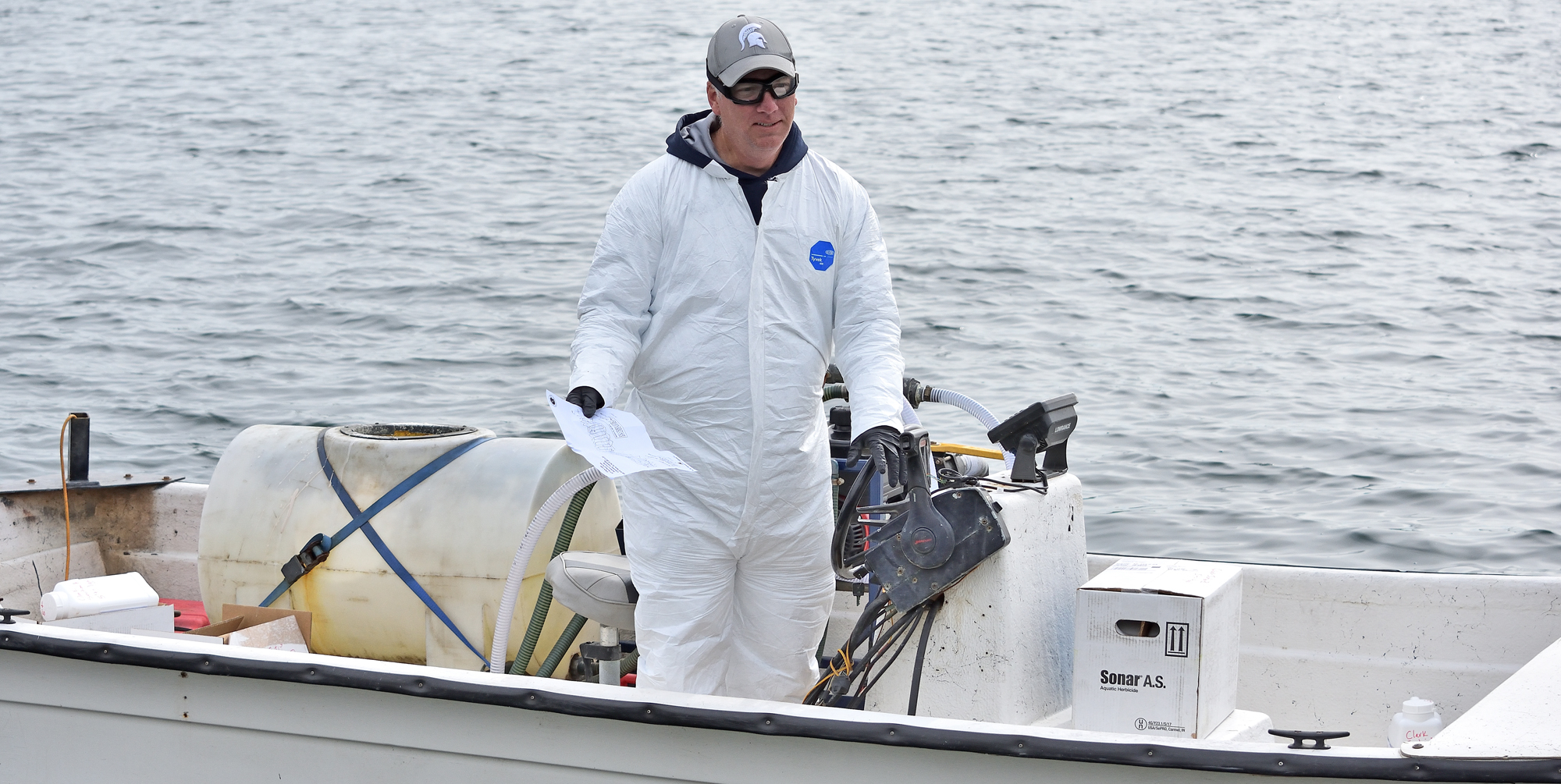A PLM crew is on the lake this morning (Tuesday) installing the long-awaited treatment product. Two boats are dividing the lake’s acreage and using GPS to ensure that they have covered the area adaquately. PLM’s Steve Hanson comments “the amount of Sonar used is small compared to other products,” 6 parts per billion. “We will return later to test various parts of the lake to make sure that it finds its way to everywhere it needs to go.”
As the treatment was taking place, another PLM crew member posted signs along the shoreline.
This notice spotlights today’s activity. To get some context on the notice, please scroll below it.
Steve Hanson puts the restrictions into context, as they could be misleading. “There are actually no irrigation restrictions (except for grass seedlings) at concentrations of 10 ppb (parts per billion) or less. We are targeting 6 ppb. The grass seedling restriction goes away at 5 ppb. People will see the 30-day restriction and be concerned understandably.” He adds, “at the target concentrations there are no irrigation restrictions for established lawns or ornamentals.” Regarding the effect on fish, Steve Hanson notes “There are no restrictions regarding fishing or fish consumption associated with the use of Fluridone. Fluridone, or any herbicide permitted in Michigan, does not bio-accumulate in the fatty tissue or muscles of fish or other aquatic organisms.”
Today’s treatment was delayed until today because of this spring’s cool weather. PLM’s Steve Hanson says favorable conditions are in place today. “The lake now has a strong thermocline.” A thermocline develops when the top 10 to 20 feet of water is warmer than that which is below it. That keeps the treatment product in a spot where it can do the most good in ridding the lake of hybrid Eurasian water milfoil.
Two products listed on the original notice mailed to property owners and posted on this website are Fluridone and Triclopyr. Fluridone is expected to take out the HEWM, and the Triclopyr is on the notice in case some HEWM persists at the end of the summer. The manufacturer of the products, SePRO, will cover the cost of the Triclopyr to treat any spots if required. Copper is also on the notice of no-restriction products, and will be used if any Starry Stonewort is found. Some lakes have been overrun by Starry Stonewort. If it shows up, the best solution is to treat it quickly.
When invasive weeds showed up in Clark Lake, the community took up the fight. Lakefront property owners petitioned Columbia Township to established a special assessment district (SAD) so that the hybrid Eurasian water milfoil (HEWM) could be eliminated wherever found in the lake. Other lakes found that leaving HEWM infestations unchecked clogged their waters-–reducing boating, destroying wildlife habitat and diminishing property values.















Well done. I’m in favor of doing all that’s necessary to save this lakes quality